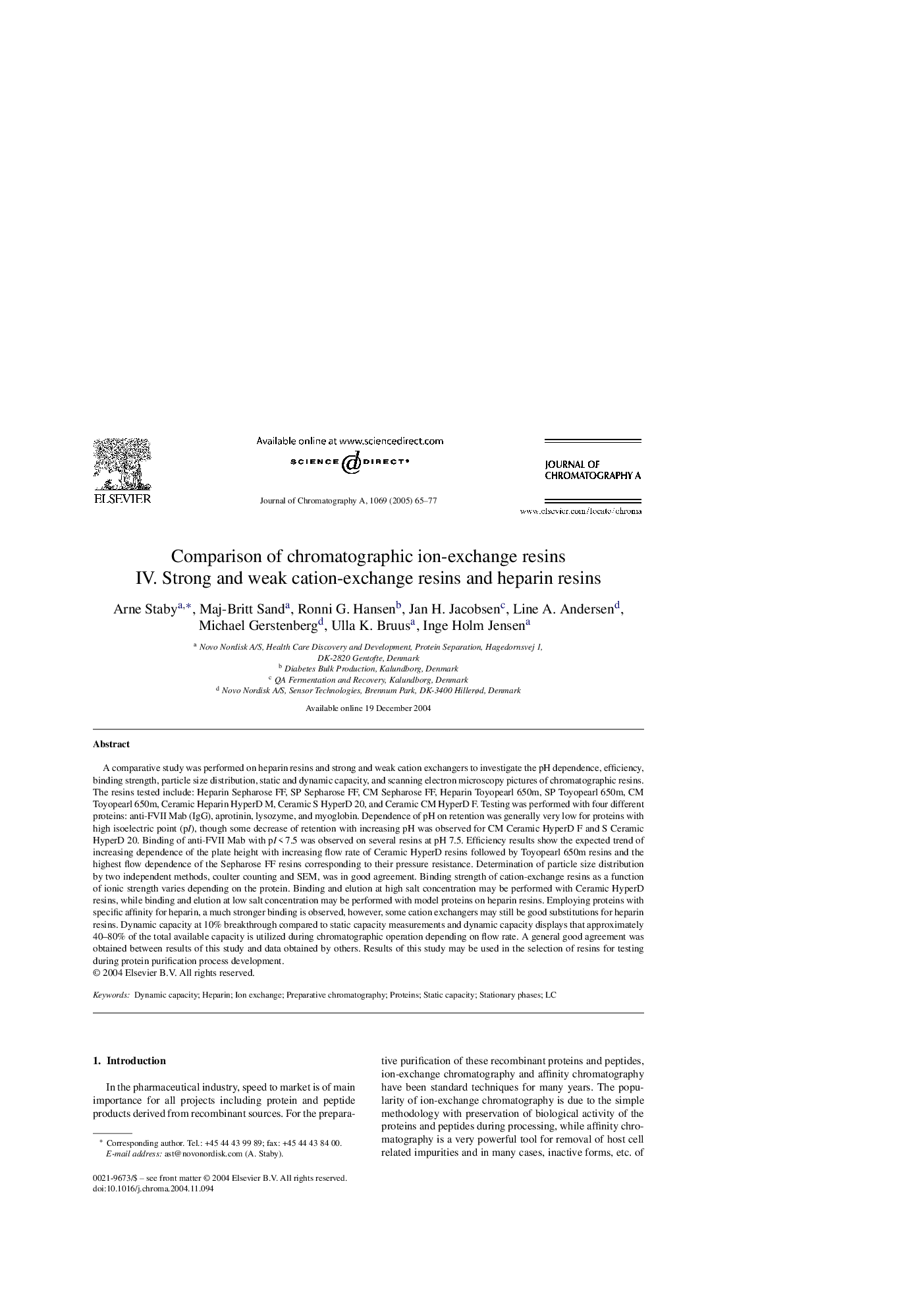| کد مقاله | کد نشریه | سال انتشار | مقاله انگلیسی | نسخه تمام متن |
|---|---|---|---|---|
| 10548067 | 965413 | 2005 | 13 صفحه PDF | دانلود رایگان |
عنوان انگلیسی مقاله ISI
Comparison of chromatographic ion-exchange resins
دانلود مقاله + سفارش ترجمه
دانلود مقاله ISI انگلیسی
رایگان برای ایرانیان
کلمات کلیدی
موضوعات مرتبط
مهندسی و علوم پایه
شیمی
شیمی آنالیزی یا شیمی تجزیه
پیش نمایش صفحه اول مقاله

چکیده انگلیسی
A comparative study was performed on heparin resins and strong and weak cation exchangers to investigate the pH dependence, efficiency, binding strength, particle size distribution, static and dynamic capacity, and scanning electron microscopy pictures of chromatographic resins. The resins tested include: Heparin Sepharose FF, SP Sepharose FF, CM Sepharose FF, Heparin Toyopearl 650m, SP Toyopearl 650m, CM Toyopearl 650m, Ceramic Heparin HyperD M, Ceramic S HyperD 20, and Ceramic CM HyperD F. Testing was performed with four different proteins: anti-FVII Mab (IgG), aprotinin, lysozyme, and myoglobin. Dependence of pH on retention was generally very low for proteins with high isoelectric point (pI), though some decrease of retention with increasing pH was observed for CM Ceramic HyperD F and S Ceramic HyperD 20. Binding of anti-FVII Mab with pIÂ <Â 7.5 was observed on several resins at pH 7.5. Efficiency results show the expected trend of increasing dependence of the plate height with increasing flow rate of Ceramic HyperD resins followed by Toyopearl 650m resins and the highest flow dependence of the Sepharose FF resins corresponding to their pressure resistance. Determination of particle size distribution by two independent methods, coulter counting and SEM, was in good agreement. Binding strength of cation-exchange resins as a function of ionic strength varies depending on the protein. Binding and elution at high salt concentration may be performed with Ceramic HyperD resins, while binding and elution at low salt concentration may be performed with model proteins on heparin resins. Employing proteins with specific affinity for heparin, a much stronger binding is observed, however, some cation exchangers may still be good substitutions for heparin resins. Dynamic capacity at 10% breakthrough compared to static capacity measurements and dynamic capacity displays that approximately 40-80% of the total available capacity is utilized during chromatographic operation depending on flow rate. A general good agreement was obtained between results of this study and data obtained by others. Results of this study may be used in the selection of resins for testing during protein purification process development.
ناشر
Database: Elsevier - ScienceDirect (ساینس دایرکت)
Journal: Journal of Chromatography A - Volume 1069, Issue 1, 25 March 2005, Pages 65-77
Journal: Journal of Chromatography A - Volume 1069, Issue 1, 25 March 2005, Pages 65-77
نویسندگان
Arne Staby, Maj-Britt Sand, Ronni G. Hansen, Jan H. Jacobsen, Line A. Andersen, Michael Gerstenberg, Ulla K. Bruus, Inge Holm Jensen,